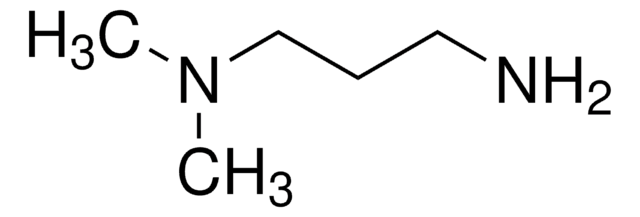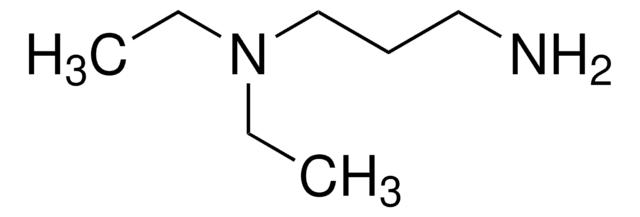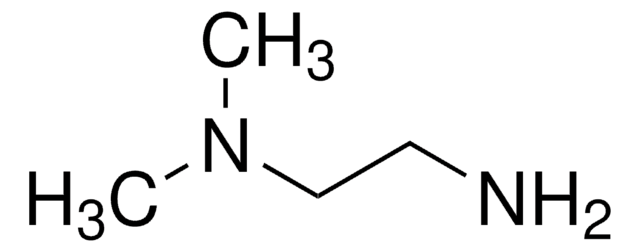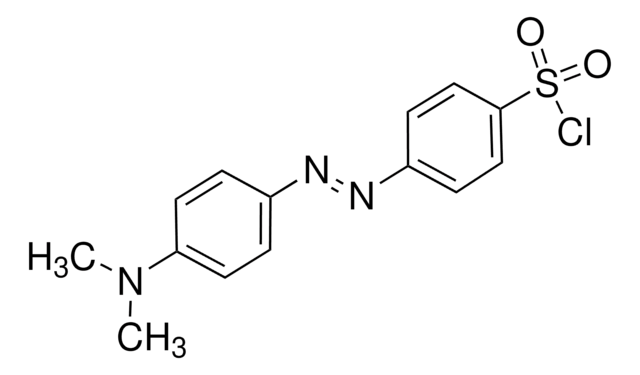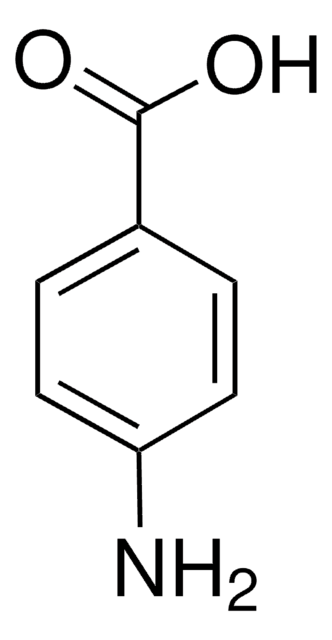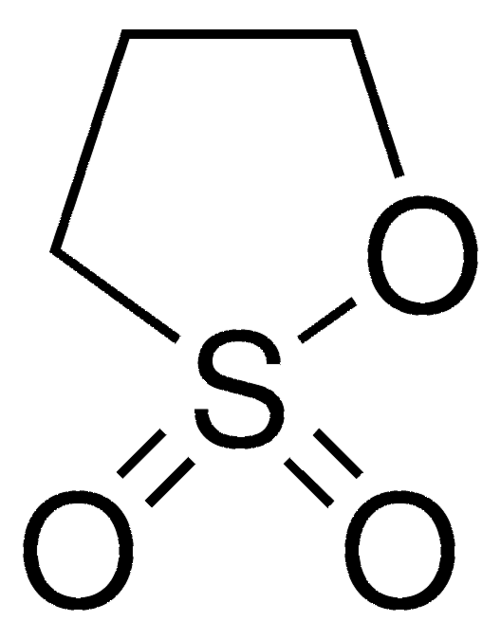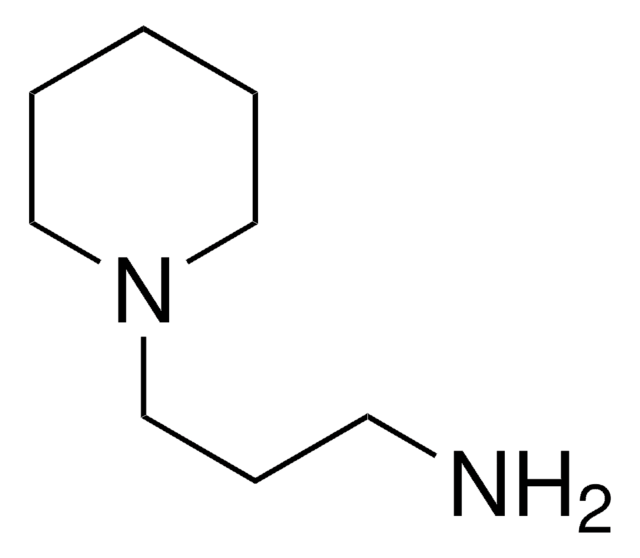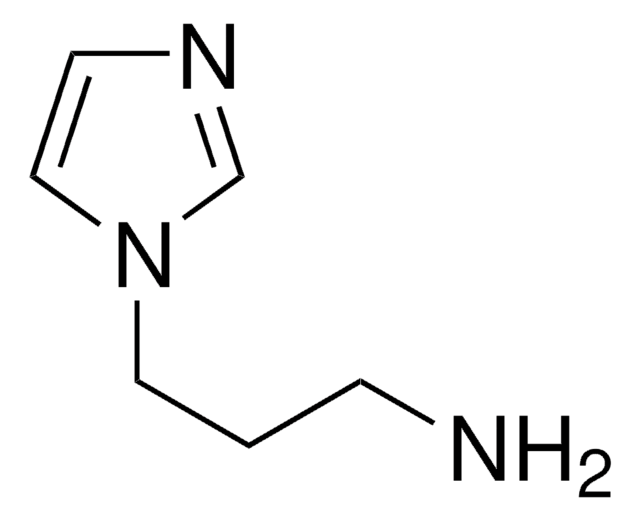39380
3-(Dimethylamino)-1-propylamine
purum, ≥98.0% (GC)
Synonyme(s) :
N,N-Dimethyl-1,3-diaminopropane, N,N-Dimethyl-1,3-propanediamine
About This Item
Produits recommandés
Densité de vapeur
3.6 (vs air)
Niveau de qualité
Pression de vapeur
5 mmHg ( 20 °C)
Qualité
purum
Essai
≥98.0% (GC)
Forme
liquid
Impuretés
≤2% water
Indice de réfraction
n20/D 1.435 (lit.)
n20/D 1.436
pb
133 °C (lit.)
Densité
0.812 g/mL at 25 °C (lit.)
Groupe fonctionnel
amine
Chaîne SMILES
CN(C)CCCN
InChI
1S/C5H14N2/c1-7(2)5-3-4-6/h3-6H2,1-2H3
Clé InChI
IUNMPGNGSSIWFP-UHFFFAOYSA-N
Vous recherchez des produits similaires ? Visite Guide de comparaison des produits
Description générale
Application
- As a cationic moiety to form the ionic liquid, 3-(dimethylamino)-1-propylaminium formate ([DMAPA]FA) which is a potential reagent to extract protein from yeast cells.
- As an aminating agent in the palladium-catalyzed amination of aryl amines.
- In the derivatization of pullulan to form cationic pullulan.
- In the partial modification of poly(styrene-alt-maleic anhydride) to form N-substituted maleimide.
- As a test compound in the parallel synthesis of alkylamine lipidoids.
- To cleave the polyamides synthesized by solid phase methods on Boc-β-Ala-PAM resin.
- Synthesis of (N,N-dialkylamino)alkyl-2-amino benzamide by reacting with isatoic anhydride.
- As a reagent for the anomeric deacetylation of protected sugars.
- Preparation of bioreducible copolymers used in gene delivery.
Autres remarques
Mention d'avertissement
Danger
Mentions de danger
Conseils de prudence
Classification des risques
Acute Tox. 4 Dermal - Acute Tox. 4 Oral - Eye Dam. 1 - Flam. Liq. 3 - Skin Corr. 1B - Skin Sens. 1 - STOT SE 3
Organes cibles
Respiratory system
Code de la classe de stockage
3 - Flammable liquids
Classe de danger pour l'eau (WGK)
WGK 1
Point d'éclair (°F)
89.6 °F - closed cup
Point d'éclair (°C)
32 °C - closed cup
Équipement de protection individuelle
Faceshields, Gloves, Goggles, type ABEK (EN14387) respirator filter
Faites votre choix parmi les versions les plus récentes :
Déjà en possession de ce produit ?
Retrouvez la documentation relative aux produits que vous avez récemment achetés dans la Bibliothèque de documents.
Les clients ont également consulté
Notre équipe de scientifiques dispose d'une expérience dans tous les secteurs de la recherche, notamment en sciences de la vie, science des matériaux, synthèse chimique, chromatographie, analyse et dans de nombreux autres domaines..
Contacter notre Service technique